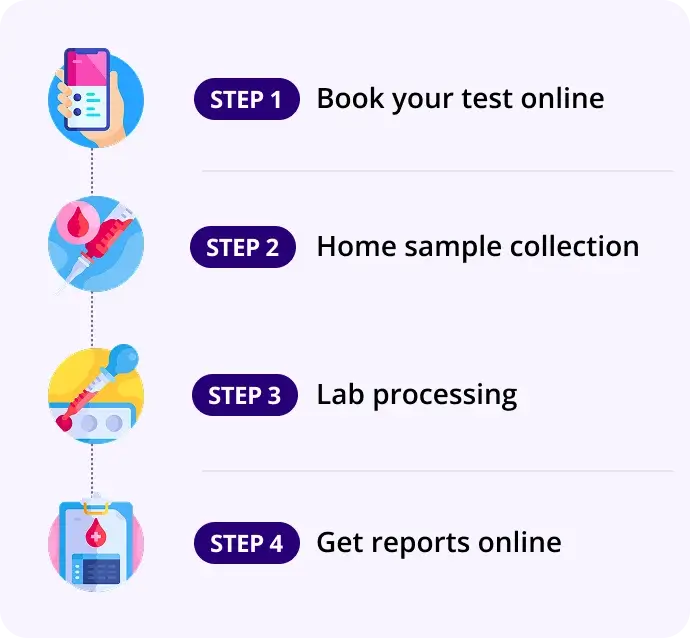Lipoprotein (A) [Lp(a)]
Report in 16Hrs
At Home
No Fasting Required
Details
Elevated Lp(a) is a strong, independent risk factor for cardiovascular disease (CVD), stroke, and calcific aortic valve stenosis
₹325₹1,045
69% OFF
🧪 What is Lipoprotein (a) [Lp(a)] Test?
Lipoprotein (a) or Lp(a) is a genetically inherited lipoprotein particle similar to LDL ("bad cholesterol") but with an added apolipoprotein(a) component.
- It contributes to atherosclerosis by depositing cholesterol in blood vessels.
- Elevated Lp(a) is a strong, independent risk factor for cardiovascular disease (CVD), stroke, and calcific aortic valve stenosis.
- The Lp(a) level is largely determined by genetics, not lifestyle or diet.
❓ Why is the Test Done?
To:
- Assess hereditary risk for premature cardiovascular disease
- Evaluate residual cardiovascular risk in people with normal cholesterol but family history of heart disease
- Guide intensified lipid-lowering therapy (e.g., PCSK9 inhibitors)
It is not routinely ordered, but recommended in:
- Early heart disease or stroke
- Strong family history of CVD
- Elevated LDL not responding to treatment
- Familial hypercholesterolemia
📊 Normal Range
Result | Interpretation |
|---|---|
< 30 mg/dL | Desirable / Low risk |
30–50 mg/dL | Borderline / Moderate risk |
> 50 mg/dL | High risk of cardiovascular disease |
Some labs report in nmol/L instead of mg/dL. Conversion is not straightforward due to particle size variability, so always interpret using lab-specific reference ranges.
📈 Interpretation of Results
Lp(a) Level | Clinical Implication |
|---|---|
< 30 mg/dL | Low genetic CVD risk |
30–50 mg/dL | Intermediate risk – monitor other lipid parameters |
> 50 mg/dL | High risk for atherosclerosis, CAD, stroke |
> 125 nmol/L | Strong predictor of premature coronary artery disease |
Lp(a) levels are stable over time and do not fluctuate with diet, exercise, or standard statins.
🧠 Associated Organs & Conditions
System/Organ | Associated Conditions |
|---|---|
Cardiovascular | Coronary artery disease (CAD), atherosclerosis, heart attack |
Neurological | Ischemic stroke |
Valvular | Aortic valve calcification, aortic stenosis |
🔄 Related / Follow-Up Tests
- Lipid Profile (LDL, HDL, TG, Total Cholesterol)
- Apolipoprotein B
- High-Sensitivity CRP (hs-CRP) – inflammation marker
- Coronary Artery Calcium Score (CAC)
- Genetic screening – if strong family history of CVD
✅ Fasting Required?
Test | Fasting Requirement |
|---|---|
Lp(a) | ❌ Not required |
Fasting may be preferred if done alongside a lipid profile.
📝 Summary Table
Parameter | Details |
|---|---|
What | Measures Lp(a), a cholesterol particle with added apo(a) |
Why | Assess genetic risk for early heart disease and stroke |
Normal Range | < 30 mg/dL (low risk) |
High Value | > 50 mg/dL – high cardiovascular risk |
Follow-up Tests | Lipid profile, ApoB, hs-CRP, CAC Score |
Associated Conditions | CAD, stroke, aortic stenosis |
Fasting Required | ❌ No (unless part of lipid panel) |
How our test process works!

